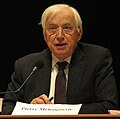Third Republic
| Minister | Titled | Party | Took office | Left office | Government | Ref. | ||
|---|---|---|---|---|---|---|---|---|
 | Adolphe Crémieux | Minister of Justice | Opposition | 4 September 1870 | 19 February 1871 | Government of National Defense | ||
| Presidency of Adolphe Thiers | ||||||||
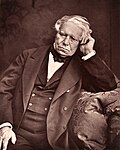 | Jules Dufaure | Minister of Justice | Centre Left | 19 February 1871 | 25 May 1873 | Dufaure I Dufaure II | ||
| Presidency of Patrice de Mac Mahon | ||||||||
 | Jean Ernoul | Minister of Justice | Legitimist | 25 May 1873 | 26 November 1873 | de Broglie I | ||
 | Octave Depeyre | 26 November 1873 | 22 May 1874 | de Broglie II | ||||
 | Adrien Tailhand | Orléanist | 22 May 1874 | 10 March 1875 | Courtot de Cissey | |||
 | Jules Dufaure | Moderate Republicans | 10 March 1875 | 12 December 1876 | Buffet Dufaure III Dufaure IV | |||
 | Louis Martel | Centre Left | 12 December 1876 | 17 May 1877 | Simon | |||
 | Albert de Broglie | Orléanist | 17 May 1877 | 23 November 1877 | de Broglie III | |||
 | François Le Pelletier | Independent | 23 November 1877 | 13 December 1877 | de Rochebouët | |||
 | Jules Dufaure | Centre Left | 13 December 1877 | 4 February 1879 | Dufaure V | |||
 | Philippe Le Royer | Republican Left | 4 February 1879 | 28 December 1879 | Henry Waddington | |||
| Presidency of Jules Grévy | ||||||||
 | Jules Cazot | Keeper of the Seals, Minister of Justice | Republican Left | 28 December 1879 | 30 January 1882 | de Freycinet I Ferry I Gambetta | ||
 | Gustave Humbert | Independent | 30 January 1882 | 7 August 1882 | de Freycinet II | |||
 | Paul Devès | Republican Left | 7 August 1882 | 21 February 1883 | Duclerc Fallières | |||
 | Félix Martin-Feuillée | Republican Union | 21 February 1883 | 6 April 1885 | Ferry II | |||
 | Henri Brisson | 6 April 1885 | 7 January 1886 | |||||
 | Charles Demôle | 7 January 1886 | 11 December 1886 | de Freycinet III | ||||
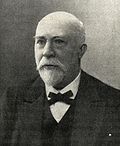 | Ferdinand Sarrien | 11 December 1886 | 30 May 1887 | Goblet | ||||
 | Charles Mazeau | 30 May 1887 | 30 November 1887 | Rouvier I | ||||
| Presidency of Sadi Carnot | ||||||||
 | Armand Fallières | Keeper of the Seals, Minister of Justice | Democratic Alliance | 30 November 1887 | 3 April 1888 | Tirard I | ||
 | Jean-Baptiste Ferrouillat | Republican Union | 3 April 1888 | 5 February 1889 | Floquet | |||
 | Edmond Guyot-Dessaigne | 6 February 1889 | 15 February 1889 | |||||
 | François Thévenet | Extreme Left | 22 February 1889 | 17 March 1890 | Tirard II | |||
 | Armand Fallières | Democratic Alliance | 17 March 1890 | 27 February 1892 | de Freycinet IV | |||
 | Louis Ricard | Independent | 27 February 1892 | 6 December 1892 | Loubet | |||
 | Léon Bourgeois | Radical Party | 6 December 1892 | 12 March 1893 | Ribot I Ribot II | |||
 | Jules Develle | Republican Union | 12 March 1893 | 13 March 1893 | Ribot II | |||
 | Léon Bourgeois | Radical Party | 13 March 1893 | 4 April 1893 | ||||
 | Eugène Guérin | 4 April 1893 | 3 December 1893 | Dupuy I | ||||
 | Antonin Dubost | Radical Left | 3 December 1893 | 30 May 1894 | Casimir-Perier | |||
| Presidency of Jean Casimir-Perier | ||||||||
 | Eugène Guérin | Keeper of the Seals, Minister of Justice | Radical Party | 30 May 1894 | 26 January 1895 | Dupuy II Dupuy III | ||
| Presidency of Félix Faure | ||||||||
 | Ludovic Trarieux | Keeper of the Seals, Minister of Justice | Republican Left | 26 January 1895 | 1 November 1895 | Ribot III | ||
 | Louis Ricard | Non-Attached | 1 November 1895 | 29 April 1896 | Bourgeois | |||
 | Jean-Baptiste Darlan | Progressive Union | 29 April 1896 | 1 December 1897 | Méline | |||
 | Victor Milliard | Non-Attached | 3 December 1897 | 28 June 1898 | ||||
 | Ferdinand Sarrien | Republican Union | 28 June 1898 | 1 November 1898 | Brisson II | |||
| Presidency of Émile Loubet | ||||||||
 | Georges Lebret | Keeper of the Seals, Minister of Justice | Non-Attached | 1 November 1898 | 22 June 1899 | Dupuy IV Dupuy V | ||
 | Ernest Monis | Radical Party | 22 June 1899 | 7 June 1902 | Waldeck-Rousseau | |||
 | Ernest Vallé | 7 June 1902 | 24 January 1905 | Combes | ||||
| Presidency of Armand Fallières | ||||||||
 | Joseph Chaumié | Keeper of the Seals, Minister of Justice | Democratic Republican Alliance | 24 January 1905 | 14 March 1906 | Rouvier II Rouvier III | ||
 | Ferdinand Sarrien | PRRRS | 14 March 1906 | 25 October 1906 | Sarrien | |||
 | Edmond Guyot-Dessaigne | Radical Left | 25 October 1906 | 31 December 1907 | Clemenceau I | |||
 | Aristide Briand | SI | 4 January 1908 | 24 July 1909 | ||||
 | Louis Barthou | ARD | 24 July 1909 | 3 November 1910 | Briand I | |||
 | Théodore Girard | Non-Attached | 3 November 1910 | 2 March 1911 | Briand II | |||
 | Antoine Perrier | ARD | 2 March 1911 | 27 June 1911 | Monis | |||
 | Jean Cruppi | PRRRS | 27 June 1911 | 14 January 1912 | Caillaux | |||
 | Aristide Briand | PRS | 14 January 1912 | 21 January 1913 | Poincaré I | |||
 | Louis Barthou | PRD | 21 January 1913 | 18 February 1913 | Briand III | |||
| Presidency of Raymond Poincaré | ||||||||
 | Louis Barthou | Keeper of the Seals, Minister of Justice | PRD | 18 February 1913 | 22 March 1913 | Briand IV | ||
 | Antony Ratier | 22 March 1913 | 9 December 1913 | Barthou | ||||
 | Jean-Baptiste Bienvenu-Martin | PRRRS | 9 December 1913 | 9 June 1914 | Doumergue I | |||
 | Alexandre Ribot | FR | 9 June 1914 | 13 June 1914 | Ribot IV | |||
 | Jean-Baptiste Bienvenu-Martin | PRRRS | 13 June 1914 | 26 August 1914 | Viviani I | |||
 | Aristide Briand | PRS | 26 August 1914 | 29 October 1915 | Viviani II | |||
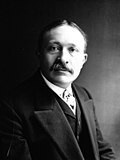 | René Viviani | 29 October 1915 | 12 September 1917 | Briand V Briand VI Ribot V | ||||
 | Raoul Péret | ARD | 12 September 1917 | 16 November 1917 | Painlevé I | |||
 | Louis Nail | PRRRS | 16 November 1917 | 20 January 1920 | Clemenceau II | |||
 | Gustave Lhopiteau | RI | 20 January 1920 | 18 February 1920 | Millerand I | |||
| Presidency of Paul Deschanel | ||||||||
 | Gustave Lhopiteau | Keeper of the Seals, Minister of Justice | RI | 18 February 1920 | 23 September 1920 | Millerand II | ||
| Presidency of Alexandre Millerand | ||||||||
 | Gustave Lhopiteau | Keeper of the Seals, Minister of Justice | RI | 24 September 1920 | 16 January 1921 | Leygues | ||
 | Laurent Bonnevay | FR | 16 January 1921 | 15 January 1922 | Briand VII | |||
 | Louis Barthou | PRDS | 15 January 1922 | 5 October 1922 | Poincaré II | |||
 | Maurice Colrat | 5 October 1922 | 29 March 1924 | |||||
 | Edmond Lefebvre du Prey | FR | 29 March 1924 | 9 June 1924 | Poincaré III | |||
 | Antony Ratier | PRDS | 9 June 1924 | 14 June 1924 | François-Marsal | |||
| Presidency of Gaston Doumergue | ||||||||
 | René Renoult | Keeper of the Seals, Minister of Justice | PRRRS | 14 June 1924 | 17 April 1925 | Herriot I | ||
 | Théodore Steeg | 17 April 1925 | 11 October 1925 | Painlevé II | ||||
 | Anatole de Monzie | PRS | 11 October 1925 | 29 October 1925 | ||||
 | Camille Chautemps | PRRRS | 29 October 1925 | 28 November 1925 | Painlevé III | |||
 | René Renoult | 28 November 1925 | 9 March 1926 | Briand VIII | ||||
 | Pierre Laval | SE | 9 March 1926 | 19 July 1926 | Briand IX Briand X | |||
 | Maurice Colrat | PRDS | 19 July 1926 | 23 July 1926 | Herriot II | |||
 | Louis Barthou | AD | 23 July 1926 | 3 November 1929 | Poincaré IV Poincaré V Briand XI | |||
 | Lucien Hubert | PRRRS | 3 November 1929 | 21 February 1930 | Tardieu I | |||
 | Théodore Steeg | 21 February 1930 | 2 March 1930 | Chautemps I | ||||
 | Raoul Péret | RI | 2 March 1930 | 17 November 1930 | Tardieu II | |||
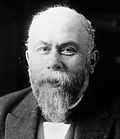 | Henry Chéron | AD | 17 November 1930 | 27 January 1931 | Tardieu II Steeg | |||
 | Léon Bérard | 27 January 1931 | 13 June 1931 | Laval I | ||||
| Presidency of Paul Doumer | ||||||||
 | Léon Bérard | Keeper of the Seals, Minister of Justice | AD | 13 June 1931 | 20 February 1932 | Laval II Laval III | ||
 | Paul Reynaud | 20 February 1932 | 3 June 1932 | Tardieu III | ||||
| Presidency of Albert Lebrun | ||||||||
 | René Renoult | Keeper of the Seals, Minister of Justice | PRRRS | 3 June 1932 | 18 December 1932 | Herriot III | ||
 | Abel Gardey | 18 December 1932 | 31 January 1933 | Paul-Boncour | ||||
 | Eugène Penancier | 31 January 1933 | 26 October 1933 | Daladier I | ||||
 | Albert Dalimier | 26 October 1933 | 26 November 1933 | Sarraut I | ||||
 | Eugène Raynaldy | AD | 26 November 1933 | 27 January 1934 | Chautemps II | |||
 | Eugène Penancier | PRRRS | 30 January 1934 | 9 February 1934 | Daladier II | |||
 | Henry Chéron | AD | 9 February 1934 | 15 October 1934 | Doumergue II | |||
 | Henry Lémery | Non-Attached | 15 October 1934 | 8 November 1934 | ||||
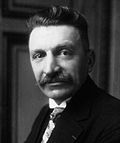 | Georges Pernot | FR | 8 November 1934 | 7 June 1935 | Flandin I Bouisson | |||
 | Léon Bérard | AD | 7 June 1935 | 24 January 1936 | Laval IV | |||
 | Yvon Delbos | PRRRS | 24 January 1936 | 4 June 1936 | Sarraut II | |||
 | Marc Rucart | 4 June 1936 | 22 June 1937 | Blum I | ||||
 | Vincent Auriol | SFIO | 22 June 1937 | 18 January 1938 | Chautemps III | |||
 | César Campinchi | PRRRS | 18 January 1938 | 13 March 1938 | Chautemps IV | |||
 | Marc Rucart | 13 March 1938 | 10 April 1938 | Blum II | ||||
 | Paul Marchandeau | 10 April 1938 | 1 November 1938 | Daladier III | ||||
 | Paul Reynaud | AD | 1 November 1938 | 13 September 1939 | Daladier III Daladier IV | |||
 | Georges Bonnet | PRRRS | 13 September 1939 | 21 March 1940 | Daladier V | |||
 | Albert Sérol | SFIO | 21 March 1940 | 16 June 1940 | Reynaud | |||
 | Charles Frémicourt | SE | 16 June 1940 | 12 July 1940 | Pétain | |||
































